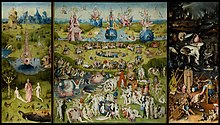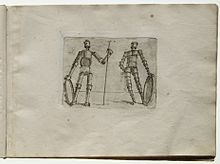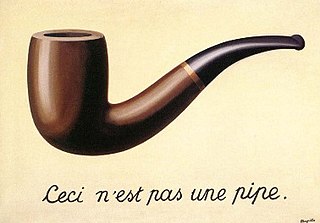
Surrealism is an art and cultural movement that developed in Europe in the aftermath of World War I in which artists aimed to allow the unconscious mind to express itself, often resulting in the depiction of illogical or dreamlike scenes and ideas. Its intention was, according to leader André Breton, to "resolve the previously contradictory conditions of dream and reality into an absolute reality, a super-reality", or surreality. It produced works of painting, writing, theatre, filmmaking, photography, and other media as well.

Hieronymus Bosch was a Dutch painter from Brabant. He is one of the most notable representatives of the Early Netherlandish painting school. His work, generally oil on oak wood, mainly contains fantastic illustrations of religious concepts and narratives. Within his lifetime his work was collected in the Netherlands, Austria, and Spain, and widely copied, especially his macabre and nightmarish depictions of hell.
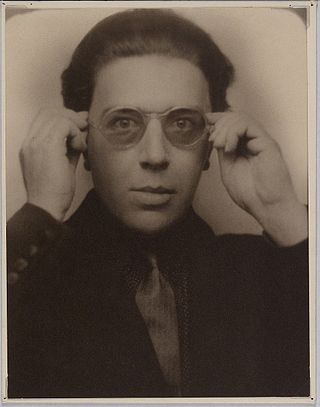
André Robert Breton was a French writer and poet, the co-founder, leader, and principal theorist of surrealism. His writings include the first Surrealist Manifesto of 1924, in which he defined surrealism as "pure psychic automatism".

The Persistence of Memory is a 1931 painting by artist Salvador Dalí and one of the most recognizable works of Surrealism. First shown at the Julien Levy Gallery in 1932, since 1934 the painting has been in the collection of the Museum of Modern Art (MoMA) in New York City, which received it from an anonymous donor. It is widely recognized and frequently referred to in popular culture, and sometimes referred to by more descriptive titles, such as "Melting Clocks", "The Soft Watches" or "The Melting Watches".
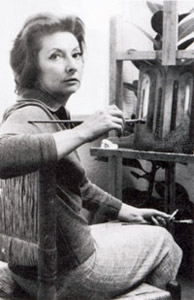
María de los Remedios Alicia Rodriga Varo y Uranga was a Spanish surrealist painter working in Spain, France, and Mexico.

The Garden of Earthly Delights is the modern title given to a triptych oil painting on oak panel painted by the Early Netherlandish master Hieronymus Bosch, between 1490 and 1510, when Bosch was between 40 and 60 years old. It has been housed in the Museo del Prado in Madrid, Spain since 1939.
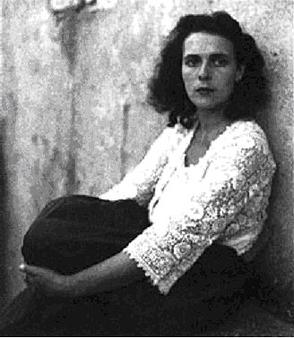
Mary Leonora Carrington was a British-born surrealist painter and novelist. She lived most of her adult life in Mexico City and was one of the last surviving participants in the surrealist movement of the 1930s. Carrington was also a founding member of the women's liberation movement in Mexico during the 1970s.
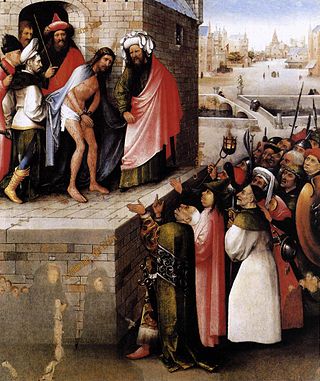
Ecce Homo is a painting of the episode in the Passion of Jesus by the Early Netherlandish painter Hieronymus Bosch, painted between 1475 and 1485. The original version, with a provenance in collections in Ghent, is in the Städel Museum in Frankfurt; a copy is held the Museum of Fine Arts in Boston. The painting takes its title from the Latin words Ecce Homo, "Behold the Man" spoken by the Roman Prefect Pontius Pilate when Jesus is paraded before a baying, angry mob in Jerusalem before he is sentenced to be crucified.

The Hermit Saints is a religious oil on panel painting displayed as a triptych, meaning it is one whole painting composed of three separate scenes. This artwork was made by the Renaissance artist Hieronymus Bosch, dating from 1493. The entirety of the triptych painting measures 86 by 60 centimetres. This artwork is currently being housed at the Gallerie dell'Accademia, Venice.
Surrealist cinema is a modernist approach to film theory, criticism, and production, with origins in Paris in the 1920s. The Surrealist movement used shocking, irrational, or absurd imagery and Freudian dream symbolism to challenge the traditional function of art to represent reality. Related to Dada cinema, Surrealist cinema is characterized by juxtapositions, the rejection of dramatic psychology, and a frequent use of shocking imagery. Philippe Soupault and André Breton’s 1920 book collaboration Les Champs magnétiques is often considered to be the first Surrealist work, but it was only once Breton had completed his Surrealist Manifesto in 1924 that ‘Surrealism drafted itself an official birth certificate.’
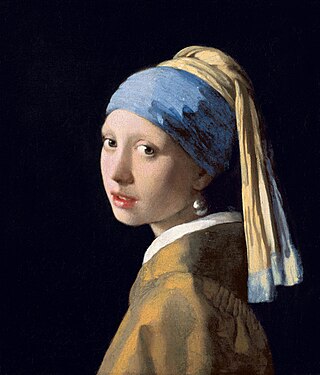
The history of Western painting represents a continuous, though disrupted, tradition from antiquity until the present time. Until the mid-19th century it was primarily concerned with representational and Classical modes of production, after which time more modern, abstract and conceptual forms gained favor.

People often see hidden faces in things. Depending on the circumstances, this is referred to as pareidolia, the perception or recognition of a specific pattern or form in something essentially different. It is thus also a kind of optical illusion. When an artist notices that two different things have a similar appearance, and draws or paints a picture making this similarity evident, they make images with double meanings. Many of these images are hidden faces or hidden skulls.

The Last Judgment is a triptych by Hieronymus Bosch, created after 1482.

Women Surrealists are women artists, photographers, filmmakers and authors connected with the surrealist movement, which began in the early 1920s.
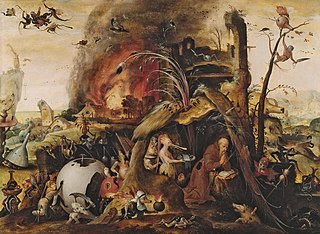
Jan Mandijn or Jan Mandyn was a Renaissance painter of the Low Countries, who worked in Antwerp after 1530. He is known for his works with subject matter and style reminiscent of Hieronymus Bosch.

Giuseppe Arcimboldo, also spelled Arcimboldi, was an Italian painter best known for creating imaginative portrait heads made entirely of objects such as fruits, vegetables, flowers, fish and books.

The Fall of the Rebel Angels is an oil-on-panel painting of 1562 by the Netherlandish Renaissance artist, Pieter Bruegel the Elder. The painting is 117cm x 162cm and is now in the Royal Museums of Fine Arts of Belgium in Brussels, Belgium. The Fall of Rebel Angels depicts Lucifer along with the other fallen angels that have been banished from heaven. Angels are falling from the sun in a stacked manner along with ungodly creatures that Bruegel created. This piece by Bruegel was previously thought to be by Hieronymus Bosch. Bruegel was influenced by a variety of artists such as Albrecht Dürer, Frans Floris I, and Hieronymus Bosch. He also got ideas for the creation of his creatures in his previous works.

The Triptych of Temptation of St. Anthony is an oil painting on wood panels by the Early Netherlandish painter Hieronymus Bosch, dating from around 1501. The work portrays the mental and spiritual torments endured by Saint Anthony the Great, one of the most prominent of the Desert Fathers of Egypt in the late 3rd and early 4th centuries. The Temptation of St. Anthony was a popular subject in Medieval and Renaissance art. In common with many of Bosch's works, the triptych contains much fantastic imagery. The painting hangs in the Museu Nacional de Arte Antiga in Lisbon.

What the Water Gave Me is an oil painting by Frida Kahlo that was completed in 1938. It is sometimes referred to as What I Saw in the Water.

Ichiro Fukuzawa was a Japanese modernist painter credited with the establishment of Surrealism in Japan's artistic communities during the early 1930s.
